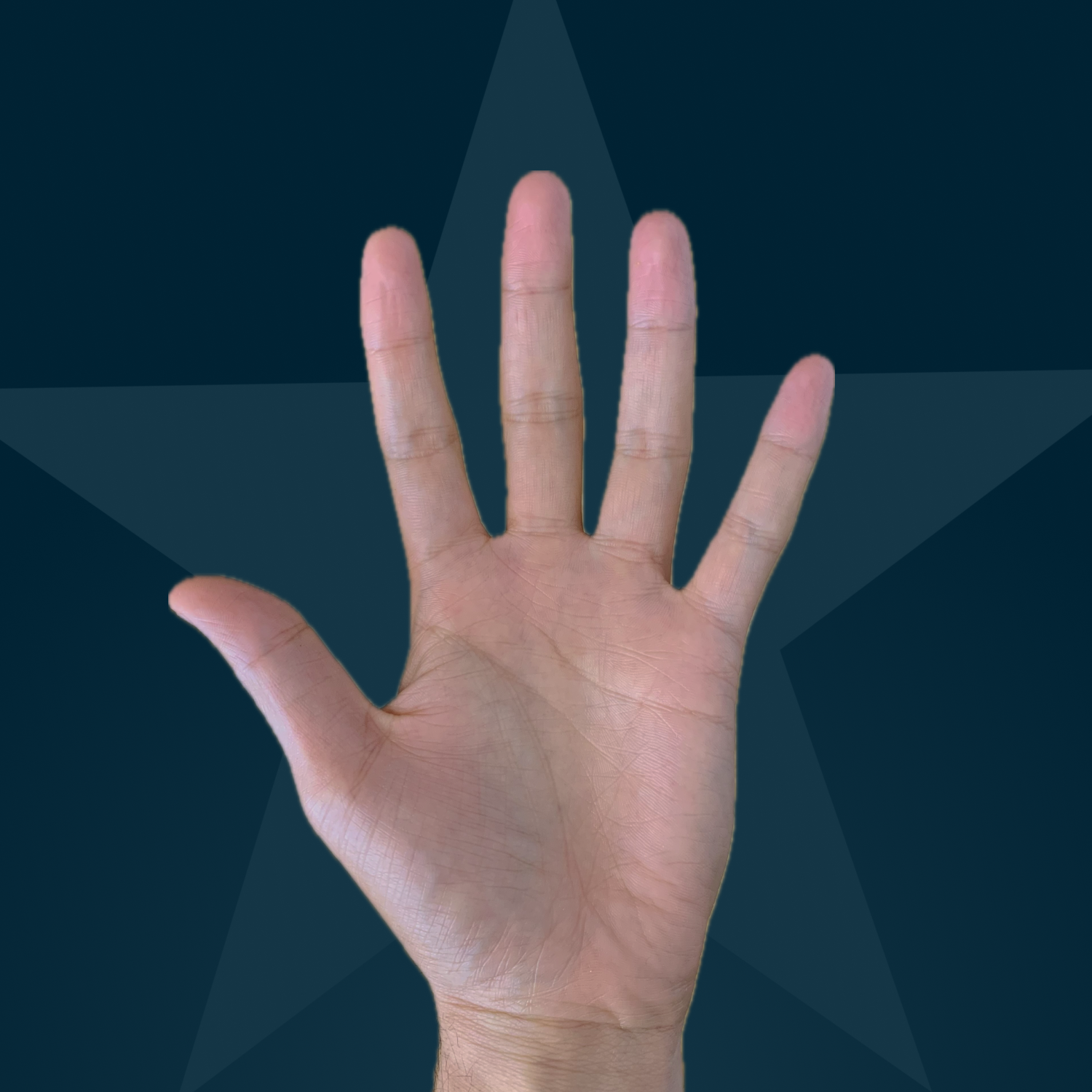Five points about star ratings
An unnecessarily in depth exploration of a common UI pattern
• • •
In the days before electricity, our ancestors used to look up at the night and see a sky full of stars. These days, we see stars in their abstract five-pointed depiction much more often. And just as the sky space is filled with countless stars, so the internet is full of star ratings.
If I had to venture a guess, dear reader, I would say that you have encountered a five-star rating in one form or another during the past week. Did you look up a place on Google Maps? The star rating is right there underneath the name. Ordered something from Uber Eats? It’s there again. Did you use a ride-sharing app to get somewhere? Guess what? The drivers have rated YOU too. No matter where you look, a star rating is there to help.
“Effectively, a five-point scale becomes a vehicle for social proof, it does a great job of summarizing how others feel about the thing we’re trying to evaluate.”
A handy way to explain why we like the number five
The usefulness of a five-point scale is quite self-evident. But you’re getting an explanation anyway, ha! For starters: A five-point scale is extremely intuitive for humans, we’re quite literally born with one on each hand. A three-point scale would place the extremes too close together; four, six, and eight don’t have a value that sits neatly in the center, and finally seven and nine offer too much detail to be understood immediately.
Also consider that the five-point scale has succeeded because it solves a modern problem. In an era where many of our decisions are made without physically interacting with people, products or places, what can we use as a proxy for the experience? Effectively, a five-point scale becomes a vehicle for social proof, it does a great job of summarizing how others feel about the thing we’re trying to evaluate.
We could have used literally anything…
Now, that’s all we’ll and good for the five-point scale but… how did stars get in there? The widespread adoption of stars in this rating system is truly fascinating to me because it feels oddly specific. Why stars? Why do we draw them like that with five points? Why not four or nine? Also, why are they pointy at all when we all know that in reality stars are hot plasma spheres floating in the void of space? When did we start using stars in ratings? Were they always used for ratings or was there something that came before? Who is responsible for all of this?
The short answer of course is culture, the long answer is the rest of this article.
Point 1: Getting to the point
By most accounts, humans are different from telescopes. Nonetheless, when it comes to how we interact with light, we can still find common ground with our tubular brethren. Let’s take a look at this image taken from the James Webb Telescope, you’ll notice that the stars in the picture have points. Those points are what’s known as refraction spikes, they are an artifact resulting from the light passing through the telescope’s aperture diaphragm.
Let’s “focus” on the similarities
Here’s where the points come from
Now, try squinting at a bright source of light like a street lamp or headlights from a car in the dark (please don’t stare at the sun). Your fleshy non-telescope human eyes will also see lines emanating from the center of the light. Those lines are diffraction spikes too. They appear in our vision thanks to little imperfections in the eyes’ lenses known as suture lines, as well as light interacting with our eyelashes.
Humans have been running on the same hardware for thousands of years. It follows then that ancient people would draw stars the way they saw them: pointy.
Point 2: Why five?
Now that we know where the points come from it’s time to focus on their number. Over time we have built cultural associations for stars with certain numbers of points.
One-pointed and two-pointed stars don’t really exist, at least according to Figma, the minimum amount of points for something to be considered a star is three.
Figma says, no one-pointed or two-pointed stars for you.
Three-pointed stars have been monopolized in popular culture by Mercedes Benz. The only other use I’ve been able to find is the flag of the Spanish Frente Popular, a left wing electoral coalition in the 1930s. Communist and Socialist political movements often use stars, red stars in fact, as a major part of their symbology. However, it’s almost always five-pointed stars.
Four-pointed stars were, until recently, mostly associated with both the general notion of sparkle and shine (as in clean and shiny) and fairy dust / magic. More recently however, they have become a visual shorthand for Artificial Intelligence, more specifically AI features in SaaS products. My assumption is that this an extension of the magic angle and marketers selling these features as ✨magical✨. Check out this excellent article if you're curious about how dust, of all things, came to be associated with magic (spoiler alert: there’s mushrooms involved)
Five-pointed stars are, at least in western culture, the default star shape. It’s the image that comes to mind when we imagine a star. In our modern era it can be found on literally anything. From mermaid inspired coffee brands to national flags. It is used for wildly different purposes across different sociopolitical groups. Did this national team win a World Cup? Throw a star above the crest to commemorate. Need a symbol for the communist revolution? Let’s use a red star. Adding a new state to the union? How about another star on the blue canton. Also there’s this thing ->🤩
Six-pointed stars are most commonly associated with the Star of David. However, it also appears in other religious traditions aside from Judaism. Hexagrams have been used in Hinduism, Buddhism, Islam, and even Christianity. Outside religious uses, six-pointed stars also make appearances in flags and heraldry; notably on the flags of Israel and Chicago.
Anything with seven points or more seems to fall outside the boundaries of “star” and are generally understood visually as an impact or an explosion. Just take a look at these shapes and tell me they don’t look almost the same.
The reason why the emoji for “star” (⭐️) is five-pointed instead of four or six-pointed, has less to do with any objective truth about the shape of a star and more to do with Western cultural dominance. The five-pointed especially has a stronger cultural cachet in the United States of America, and due to the enormous soft power the USA exerts on the rest of the world; American ideas of how things should look and feel (Foreshadowing) have spread across the world on the back of these cultural exports.
So the question now becomes, how did the five-pointed star gain so much traction in America? The answer lies with the American flag itself. The story goes that in order to save time, famous seamstress Betsy Ross devised an ingenious way of making a five-pointed star with a single cut. Check out episode 494 of the design podcast 99 percent invisible for the full version of the story (the five-pointed star part starts at 18:40).
Point 3: Points of interest
To understand how stars found their way into our rating systems, we must first understand the context in which they first appeared. The concept of “middle class” as we understand it today emerged in Europe during the 1800s due to high economic growth, widespread access to education, and technological advancements, particularly in transportation.
We don’t need a deep dive into the socioeconomic landscape of 19th century Europe, but it’s important to note that this era saw an increase in travel among the middle class. This explosion of middle class travel, in turn, gave rise to a niche industry of pocket travel guides that curated points of interest and helped tourists make the most out of their time abroad. This new format naturally required a system for quickly marking which places were a must-see versus which were okay to skip.
19th century europeans went “all-in” on railways
The hottest EDC item for traveling across Europe
For this next section, we’re taking a look at three innovations that got us to stars in star ratings.
Innovation 1: Marking notable places with a symbol.
On her guide, Travels on the continent (1820), author Mariana Starke makes use of exclamation marks (!) in an unspecified scale to mark works of art as “most deserving of notice”
Travels on the continent by Mariana Starke
The writer made liberal use of exclamation marks, sometimes going as far as seven in a row!!!!!!!
Innovation 2: Using a star as the symbol
Building on the idea, publishers John Murray (Founded 1768) and Baedeker (Founded 1827) started using stars (depicted as ✻) in their own European travel guides. To mark points of interest.
Paris and Environs by Baedker
✻ being used to mark a notable landmark, no defined scale is used.
Innovation 3: Using stars with a defined scale.
The Michelin Guide (you might have heard of it), published by the French tire maker Michelin to sell tires to wealthy car owners, provided the final piece to this puzzle. In the year 1900, they released into the world their now world famous three "star" rating system for restaurants.
Their rating scale goes like this:
✻ - a very good restaurant in its own category
✻✻ - excellent cooking, worth a detour
✻✻✻ - exceptional cuisine, worth a special trip
Guide Michelin by Michelin
First edition Michelin guide showing ✻ being used in a defined point scale. There’s also a bunch of other symbols.
That’s right! It was the folks at Michelin who gave us the first, and longest continually used, modern star rating system. Sacrebleu!
Point 4: Five stars are born
So you know how everything is a remix? Well, for the next step in our journey, we’re taking a look at another era of middle-class economic prosperity: Post-World War II America. In 1956, the Federal Highway Act, which authorized the construction of the interstate highway system, was signed into law. In the years that followed, long-distance car travel across the country became easier and much more accessible for the general public. That shift in transportation also birthed the much romanticized American institution that is the road trip.
Taking a cue from the Michelin guide, oil company Mobil was looking for a way to associate their brand with luxury. They figured that if car tires could swing it with fine dining, oil could go bigger and get in with hospitality (duh!). The idea was to encourage people with disposable income to take more, and longer road trips with their gas-hungry cars. Thus, sorry not sorry, stonks.
Post WWII Americans went all in on highways
The hottest item for your mustang’s glove box
The Mobil Travel Guide launched in 1960 for one dollar a pop. It was available for purchase at gas stations and provided tourists and business travelers with useful information about the best hotels and restaurants around.
Similar to Michelin, Mobil devised a star-based rating system. The difference, however, was in the number of stars:
★ - good
★★ - very good
★★★ - excellent
★★★★ - outstanding
★★★★★ - one of the best in the country.
1966 Advertisement for the Mobill travel guide
Even if you didn't buy the guide, they really wanted you to learn the five star rating system, it’s almost bigger than the book!
Eagle-eyed readers (or should I say bald eagle-eyed) might have noticed something about the star. In remixing the European idea of a travel guide for American consumption, the flower-like six-pointed star used by Michelin(✻) became a more contextually appropriate five-pointed star (★). America’s branding really is consistent.
Hotels and restaurants coveted a star rating and were quick to advertise it to the public when they got a good one. That publicity helped the system spread far beyond its roots in the Mobil travel guide. As international travel increased and hospitality chains expanded their presence globally, the star rating system was adopted and adapted by other countries, becoming a recognized standard for quality and service all over the world.
So we have arrived at the five-star rating we all know and love. It was Mobil who, in one fell swoop, took the European idea of star ratings and brought it to its final form: ratings consisting of one to five (five-pointed) stars. However, there’s one more point to this starry tale.
Point 5: Stars in the cloud
In the decades after their popularization by Mobil, five-star ratings remained in use for hospitality; occasionally making odd appearances in places like music or movie reviews. During the analog times, every one of the star-ratings people came across was bestowed by an institution or decreed by a professional taste maker. It wasn’t until the internet era that ratings and reviews transformed into Vox populi incarnate. The internet, as it did with a great deal many things, made star ratings by all and for all. Rather poetically, by putting them in the cloud, stars were yanked from the skies and brought down to the ground to party with the rest of us. At this point you might be thinking “Why would I want to delegate that to a bunch of strangers?”; and while it’s no substitute for a well informed expert’s opinion, there’s something to be said about the wisdom of a crowd. If you ask 800 people to estimate the weight of a cow, they WILL get incredibly close.
The wisdom of crowds
In 1906, scientist Francis Galton discovered that the average guess of a crowd of 800 people could estimate the weight of a cow with 99.9% accuracy (within 1 lb.)
The late 90’s dot-com scene gave rise to marketplace sites such as eBay and Amazon, as well as consumer reviews and rating aggregators like Epinions and RateItAll. As we discussed at the beginning of this article, star-ratings are an excellent stand-in for social proof; so it’s really no wonder that they were eagerly adopted by Silicon Valley designers as a useful tool of reassurance for a public new to the online world.
eBay, 1996
epinions.com, 1999
epinions.com, 2000
Amazon, 1999
During the early 2000’s platforms like Yelp, Amazon, Google, Facebook, and TripAdvisor catapulted five-star reviews to the widespread popularity they enjoy today. Woven into every product experience imaginable, especially with the rise of the… Gig economy (Gasp!); star-reviews now pepper every location detail, product listing, and professional profile.
Airbnb, 2023
Google maps, 2023
And with that, we have arrived at the present day. Five-star ratings have, at least for now, reached their final form as ubiquitous little helpers ready to dispense useful information about anything and everything. It really makes you wonder what’s next.
In conclusion
As promised, I’ve taken you through an unnecessarily in-depth exploration of a surprisingly deep UI pattern. The long journey from star to five-star review has taken us through biology, cultural significance, European middle class travel, American hospitality, and finally, the internet.
I am well and truly surprised by the amount of cultural depth something so seemingly mundane carries. I give the five-star rating, five stars ★★★★★










































